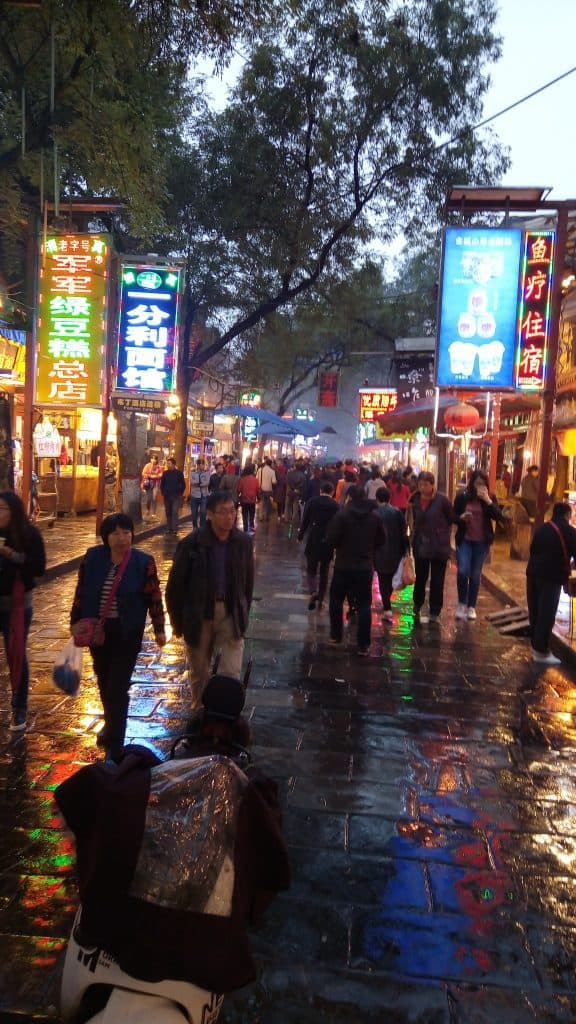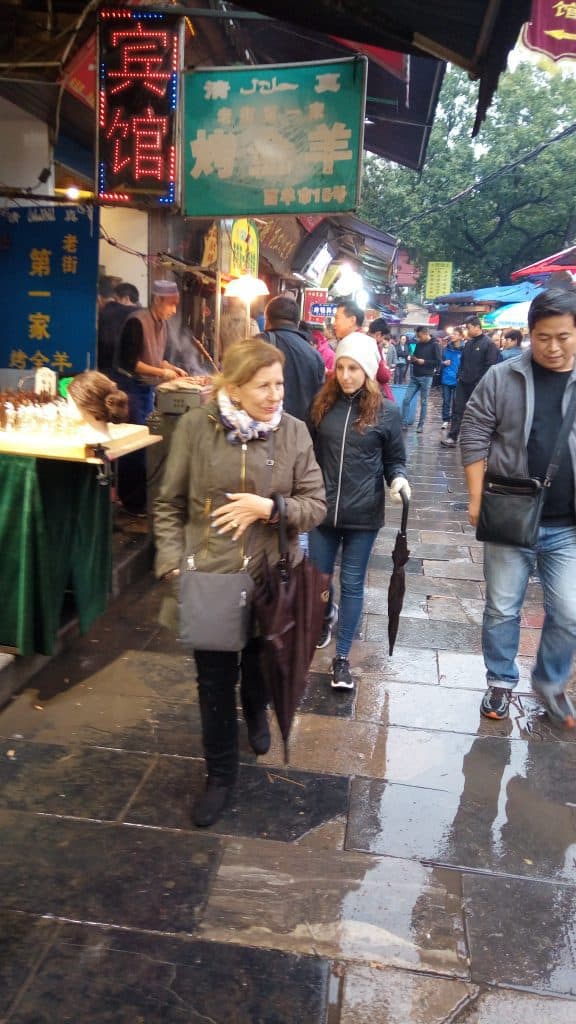We caught an early morning flight from Beijing to Xi’an, once the ancient capital of China and, depending on how you want to look at it, the starting point or terminus of the ancient Silk Road and parts of the old city feel as if the Silk Road is alive and well and only updated to allow for electricity. It was my first time flying, since I arrived in China back in April and of course, my first taste of domestic travel, Chinese style. Despite my fears of language barrier issues and differences in air-travel cultural differences, I must say, flying around China is a much better experience than flying around the US. All of the airports we passed through had ample signs in English (OK, I can give America that, too.) All were very easy to negotiate and despite the inability to communicate with the service personal, we had no problems with getting our reservations pulled up, bags checked and seats assigned without delay. As I mentioned previously, China is much more fastidious about airport security. It’s the only time I saw police with automatic weapons although they were few and far between. The real difference is going through security ahead of the gates. Your bags are screened through an X-ray machine but you aren’t. Rather, you are completely patted down by hand, physically, while being scanned with a metal detector. No part of your person isn’t examined. It’s efficient and no muss, no fuss and don’t even think about complaining about your precious “junk” being manhandled, if you excuse the double entendre.
The other noteworthy differences are: with the single exception of coffee, airport food and drinks aren’t outrageously marked-up. A 16 oz bottle of diet coke which costs about forty-five cents in a market goes for sixty-cents in an airport store. I bought a Subway sandwich at one of the airports and it cost me 25rmb (about $3.50) Airport coffee at six dollars though: ouch! The biggest difference is boarding planes. There’s no organized method. You just line up like we used to do in the old days of flying in America. No lanes, no groups, no zones. Oddly, we got boarded and seated much, much faster than in America. Nancy pointed out that as airlines here don’t charge for checked baggage, there are far fewer passengers who are lugging on carry-on bags but then, Sophie pointed out that Southwest doesn’t charge for checked bags either and their boarding process is just as tedious and drawn-out as any. It remains a mystery, but a happy one.
We flew four different carriers and all of the equipment was Airbus A-321’s, for those (like me) who pay attention. All of the boilerplate safety instructions were given in English and Chinese, which always included a video demonstration, which was workmanlike in nature, unlike, for example, Virgin Air’s famous safety, dance-rap-video (“So tonight, get ready to fly, cause we’re gonna live it on up in the sky…”) Now, that tune’s stuck in your head too! Also, on all flights including one that was under two hours, a meal of some sort was served. Granted, seaweed, as a main dish took some getting used to and some of the food combinations were true “head-scratchers” but still, these were unexpected touches and taken as a whole, I have no doubt any seasoned Chinese flyer who would fly on most US carriers would be completely unimpressed and woefully underwhelmed, practically from start to finish. “Friendly skies” indeed! Although, I’m sure they would be amused by Virgin’s video (“For the .001 percent of you who have never operated a seatbelt before. Really?!?”)
OK, so now that you know far more about the state of Chinese air travel than you cared to ever know, on to the point of this blog. We arrived in Xi’an early afternoon and were greeted by our driver and our guide, Michael.It was cold and rainy and remained so for our entire time there. We were taken directly to our hotel, the Sofitel at Renmin Square, which lay inside the walls of the old city. In other words: a great location. I must say, I had a gorgeous, two-room suite that was way beyond what I needed but hey, who dislikes luxury? Little did I realize what lay ahead, room-wise in Chengdu a few days hence.
Once we got settled into the Sofitel, we were picked up for a food tour of the old part of Xi’an. It was my first time in a Tuk Tuk which is, typically, a three-wheeled taxi. They are quite small, but four can fit, albeit, uncomfortably. As part of this tour, we had unlimited beer, which despite the cold and rain, made me quite happy. We were escorted by our guide, Ruixi to five (as I recall) absolute “hole in the walls” and in one case, a “hole in the street,” mostly in the Muslim Quarter which is part of the original Silk Road trade route. The food certainly was authentic and some of it was very tasty (see pictures). The best part was seeing an aspect of life that has remained largely unchanged since Ceiling-Cat (“fleas be upon him”) knows when, with the singular exception of gas and electricity (I suppose that’s two exceptions but then, that would ruin a perfectly good collocation.)
The next day, it was off to see the Terracotta Warriors which has largely defined Xi’an’s raison d’être as a tourist destination which is too bad because the history of the place warrants traveling here, regardless. Our tour guide was Michael, who picked us up the airport. His English was outstanding and his knowledge of Xi’an’s history was superlative. The drive was quite a ways out of the old part of Xi’an and again, the weather was, as mentioned, rainy and dreary. As in other places where there is a tourist attraction of note, an entire tourist industry has grown up in the surrounding areas of the Terracotta Warriors (TC, hence-forward) “pits.” One is bombarded with people selling all manner of TC related kitsch as you walk a considerable distance to get to the actual museum complex.
It was quite remarkable to finally come face to face with the TC’s. This is one of those sights that I have been fascinated with since they were discovered, but in my wildest dreams, never imagined I would actually get to see. So it was quite a profound feeling when I entered the first Pit area to see the iconic figures arranged exactly as we’ve all come to expect. Their story is remarkable and standing in the proximity of their burial over 2000 years ago and imagining all of the history that unfolded since, left me awestruck, being able to experience the amazing artistry and handiwork of ancient people and getting a glimpse into their mindset. If this were a Yelp review, I’d say “five-stars.” This destination should be on everyone’s “bucket list.”

The Sofitel Hotel, Renmin Square in the old city. Two room, one and a half bath suite for 1283 rmb ($185 a night).











Our evening food tour was focused on the Muslim Quarter of the old city and this street scene is typical of the area where we dined at various, ahem, “establishments.”


This was a sweet porridge that was my favorite from the food tour.

Taking the concept of a “hole in the wall” and moving it out into the street. Just like in the days of the Silk Road, circa 200 BCE. Can you get more authentic?




Here’s a scintillating clue that we may very well be in a Muslim establishment.


OK, here’s the textbook definition of “hole in the wall” restaurant.
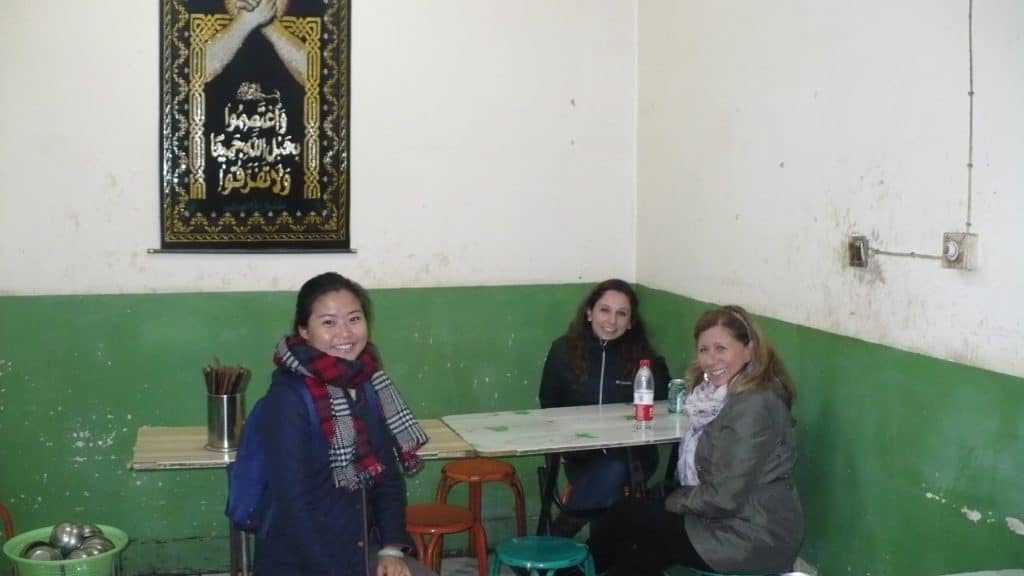
“Hole in the wall,” continued.


These ladies joined us late in the evening food tour and on their recommendation, Nancy contacted a restaurant in Beijing for one our last dinners and when we dined there many days later it truly was one of those “food orgies” that you simply will never forget. Remember the name, “Black Seseme Kitchen” for a later posting.


The next day at the front entrance to the various “pit” buildings holding the Terracotta Warriors.

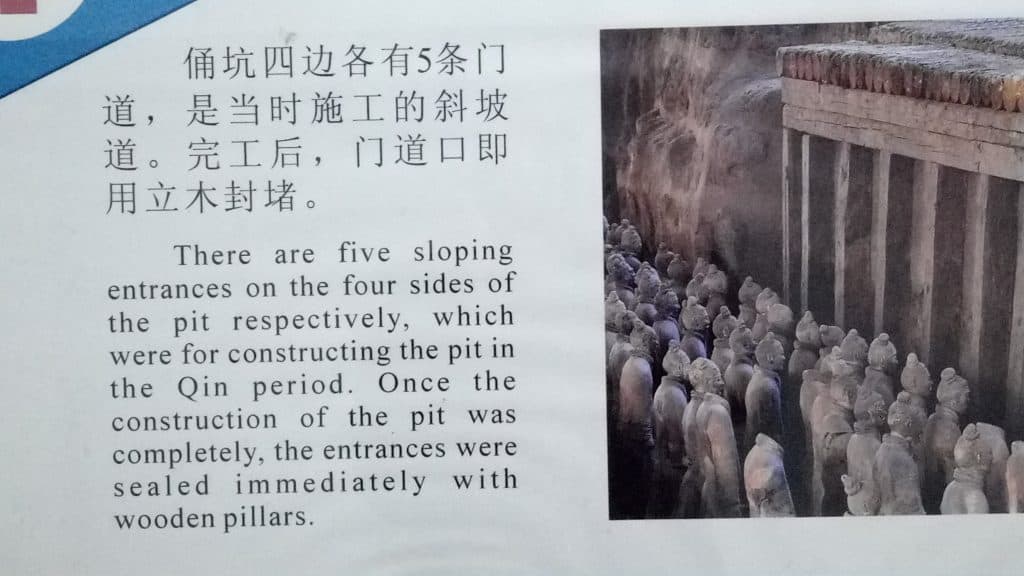









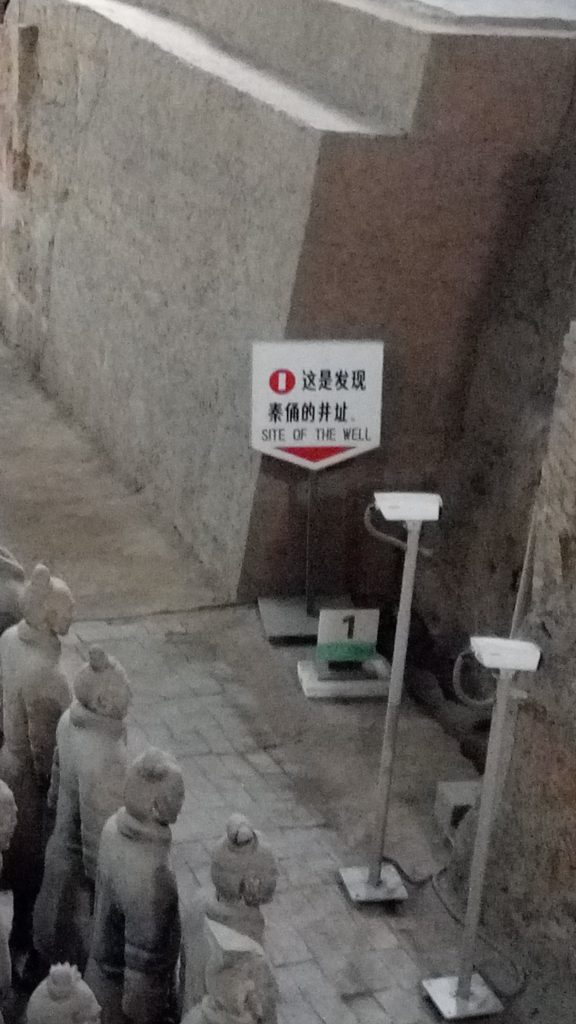
























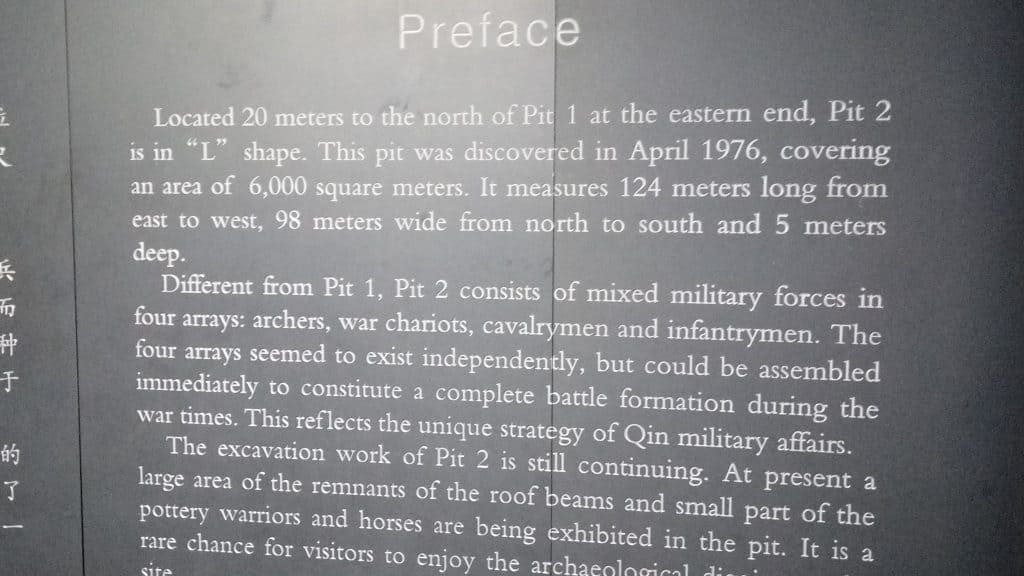



















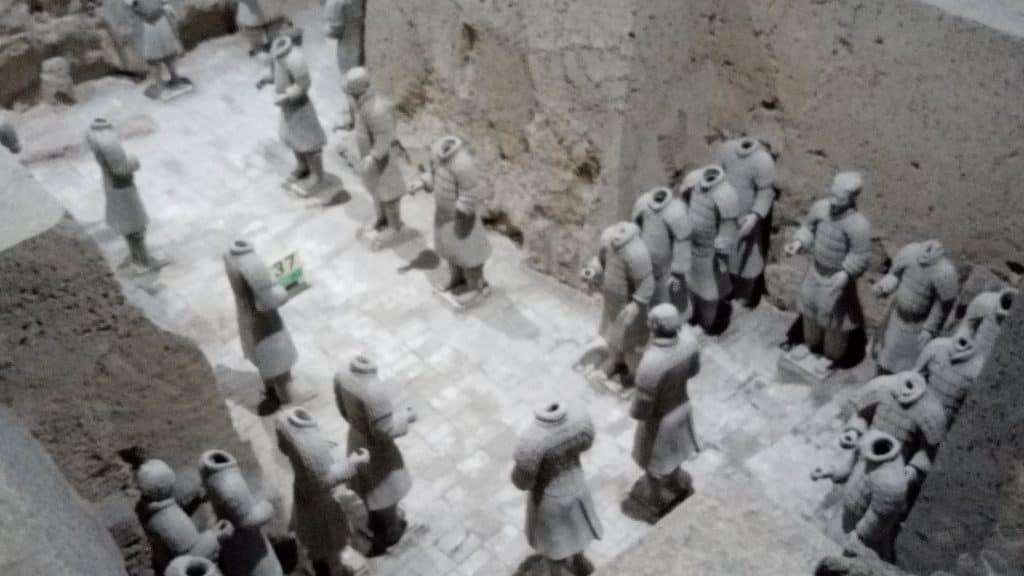


After visiting the TC’s we headed off to lunch. Xi’an is known for its noodle dishes. So, once again, allow a digression, this time into certain aspects of Chinese cuisine that I’ve learned about. It seems to me that if there is a divide in Chinese cuisine, it centers around noodles vs. rice. Noodles are predominently a northern dish and rice, a southern dish. This sets up a north vs. south debate about which is better and that of course, leads to or causes all sorts of sociological cracks and fissures well beyond which comestible is better, etc, etc.
I am still perplexed when I meet a “southerner” who bemoans the dreadful food of Beijing. How could it possibly be “awful” given the enormous variety available. I supose such debates and subtleties are best left to people who’ve spent their entire lives living in China. It’s way beyond my culinary abilities to devine regional differences beyond the obvious such as spicy or not spicy. It does help to know that people are quite passionate about the food they grew up with and are usually fiercely loyal to the food of their hometown province.
Xi’an is no exception to the above. It’s well-known noodles were the highlight of our lunch. Our guide, Michael took us to one of his favorite noodle-dives and for the three of us, it still ranks as one of the best meals we had in China. As I recall, you order, according to the length of one noodle. They’re big noodles! (see pict of Sophie) Lunch for the four of us, including drinks came to 99 rmb- about $15.00. Imagine what this would cost in NYC.

That’s Michael; our guide.








After lunch we headed into the old city shopping district which was once a part of the Silk Road trade route. As you can see, it’s jam-packed with shoppers and very few westerners were to be seen.




